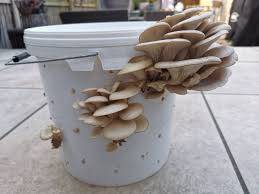Small-Scale Mushroom Farming at Home: A Beginner’s Guide
Mushroom farming is a rewarding and sustainable venture that can be done on a small scale right at home. With the growing interest in organic and locally sourced food, home mushroom cultivation is gaining popularity. It’s a relatively easy and inexpensive way to grow your own food, providing fresh, nutritious mushrooms year-round. In this article, we will explore the basics of small-scale mushroom farming at home, from preparation to harvest.
Why Grow Mushrooms at Home?
Mushrooms are highly nutritious, low in calories, and a rich source of vitamins, minerals, and antioxidants. They also require minimal space to grow, making them ideal for home cultivation. With the right setup, you can produce a bountiful harvest of mushrooms without much expertise or expensive equipment. Additionally, mushroom farming is a sustainable practice that reduces food waste and allows you to grow your own food in an eco-friendly manner.
Getting Started with Mushroom Farming
To begin growing mushrooms at home, you need to understand a few key concepts. The most important step is choosing the type of mushroom you want to grow. Popular edible varieties for home farming include **button mushrooms (Agaricus bisporus)**, **oyster mushrooms (Pleurotus ostreatus)**, and **shiitake mushrooms (Lentinula edodes)**. Each type of mushroom has its own specific growing requirements, so it’s essential to choose one that suits your space and climate.
Supplies and Setup
1. **Growing Medium (Substrate)**: Mushrooms grow on organic material like straw, sawdust, or coffee grounds. Each type of mushroom has a preferred substrate. For instance, oyster mushrooms thrive on straw, while shiitake mushrooms do best on hardwood logs or sawdust.
2. **Mushroom Spawn**: Mushroom spawn is the inoculated material that contains the fungal mycelium, which is the root structure of the mushroom. It’s typically sold in jars or bags and can be purchased online or from specialty gardening stores.
3. **Containers**: You can grow mushrooms in a variety of containers, such as plastic bins, buckets, or specially designed mushroom grow bags. These containers help retain moisture, which is crucial for mushroom development.
4. **Environment**: Mushrooms prefer a cool, dark, and humid environment. A basement, garage, or any space with consistent temperature and humidity works well. A temperature range of 55-65°F (13-18°C) is ideal for most varieties.
Steps to Grow Mushrooms
1. **Prepare the Substrate**: If you are using straw or sawdust, pasteurize it by heating it to around 160°F (71°C) for about 30 minutes to eliminate harmful microorganisms. This ensures a clean growing medium.
2. **Inoculate with Spawn**: Once your substrate is cooled, mix it with mushroom spawn. The spawn acts as the “seed†that will grow into mushrooms. Be sure to mix thoroughly to ensure even distribution of the mycelium.
3. **Incubation**: Place the inoculated substrate in your chosen container. Keep the container in a dark, warm place for a few weeks to allow the mycelium to colonize the substrate. During this time, the mycelium will spread and form a white, web-like structure.
4. **Fruiting**: Once the substrate is fully colonized by the mycelium, it’s time to induce fruiting. Move the container to a cooler location with higher humidity and expose it to some light. Mist the substrate regularly to maintain moisture. Mushrooms will begin to appear within a week or two.
5. **Harvesting**: Once the mushrooms have fully grown, gently twist them off at the base. Be careful not to damage the substrate, as it may continue to produce additional crops. Some varieties, like oyster mushrooms, can yield multiple harvests over a period of several months.
Tips for Successful Mushroom Farming
- **Humidity is key**: Mushrooms require a high level of humidity, typically between 85-95%. To maintain this, you can use a humidifier, mist the growing area regularly, or place containers on a tray of wet pebbles
- Patience is important: Growing mushrooms can take a few weeks, so patience is required. Each type of mushroom has a different growing cycle, but most can produce several crops in a year.
- Proper ventilation: Ensure that the growing space is well-ventilated to prevent mold and contamination. However, avoid direct drafts, as they can dry out the mushrooms.
- Recycling the substrate: After harvesting, you can reuse the spent substrate as compost or as an addition to your garden soil. This reduces waste and benefits your garden.
Conclusion
Small-scale mushroom farming at home is an enjoyable and sustainable way to grow nutritious food with minimal space and resources. With the right materials, environment, and care, anyone can start cultivating mushrooms in their home. Whether for personal consumption or as a hobby, growing your own mushrooms offers numerous benefits, from fresh produce to environmental sustainability. By following these basic steps and tips, you’ll be well on your way to harvesting a fresh batch of homegrown mushrooms.


